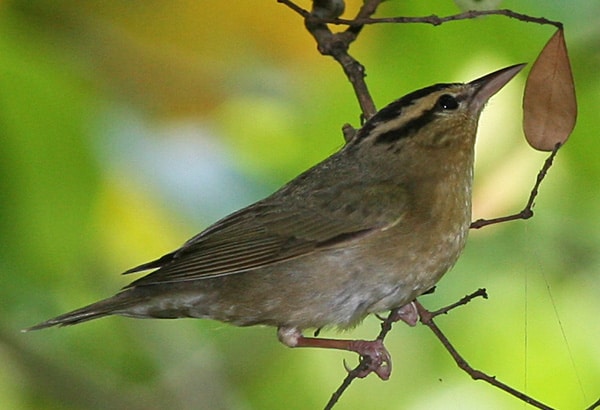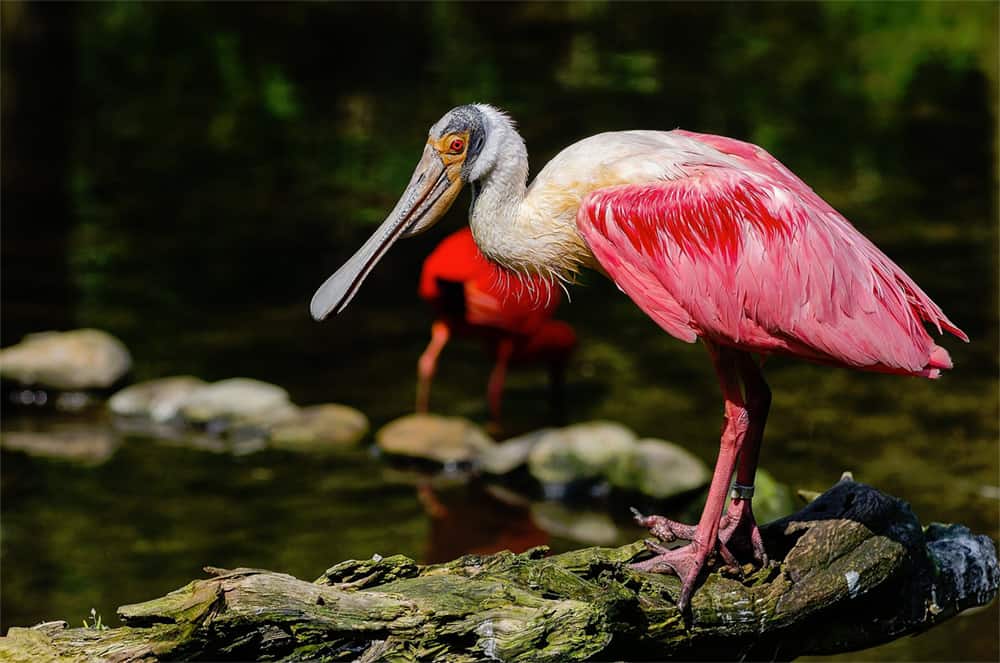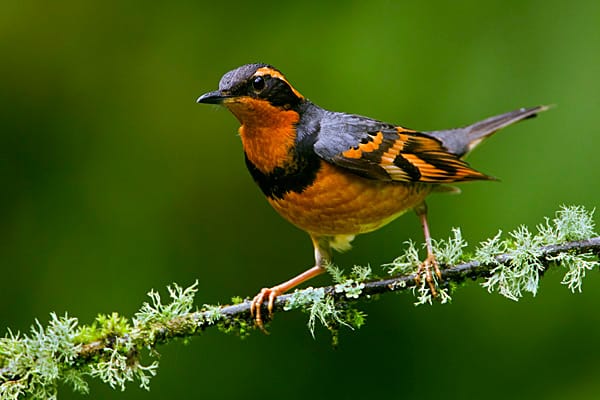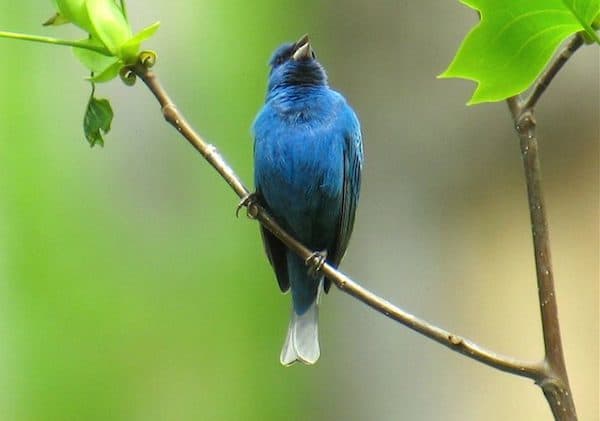Look For
The worm-eating warbler is lightly colored underneath its wings and breast with a darker olive color on its back and head. It has brown stripes along its eyes and going back down its head. It is around 5 inches long.
Listen For
The song from the worm-eating warbler is very buzzy and fast, often being called insect-like because it is so rapid. It sounds like a rapid, high-pitched trill and the call is a loud chip or tseet sound.
Find It
This bird prefers densely wooded deciduous forests, mostly on steep hillsides. It breeds in the southeastern part of the United States and winters in Central America. When on its wintering grounds, it chooses moist forests. The warbler likes a cool and shady habitat to nest in.
Feeding Behavior
It forages among the understory of deciduous forests but doesn’t spend much time on the ground. Instead, it gleans through hanging dead leaves. It also picks through smaller shrubs. Despite its name, the worm-eating warbler does not eat earthworms but rather caterpillars and other insects such as spiders and slugs. The nestlings eat grubs or moths.
Nesting Behavior
The nest is placed on the ground, meticulously hidden by dead leaves as cover. It is usually against a tree or shrub on a hillside. The nest is made by the female out made of dry, skeleton leaves and lined with animal hair.
The male will defend the nest and territory by singing perched in a tree at mid level. This song is different and more musical than the usual high trill. The warbler lays 3 to 6 eggs that are white or pink with brown speckles.
Wow!
The worm-eating warbler leaves the nest 8 to 10 days after hatching. The chicks can survive even though they cannot fly at that age.




